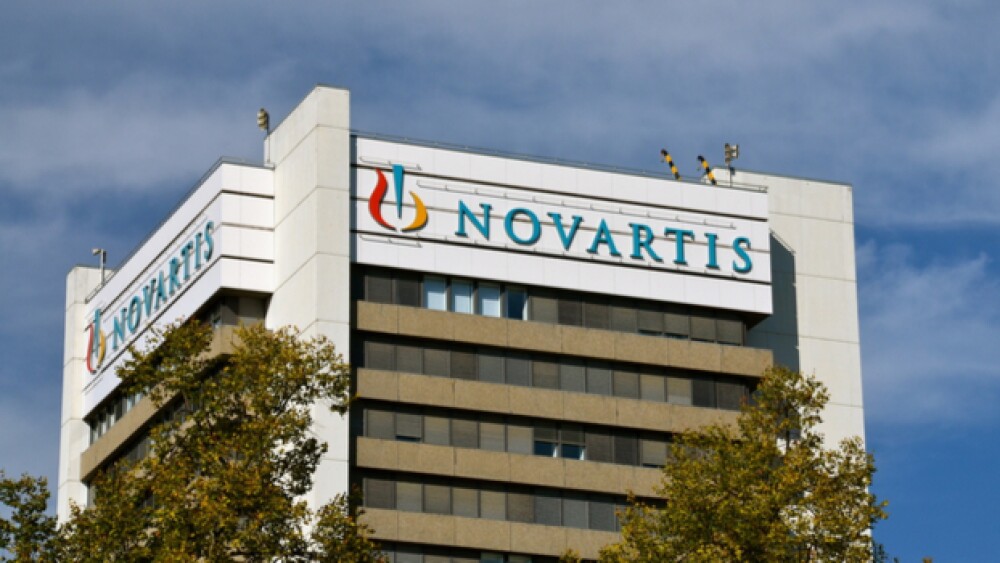Novartis flexed its clinical muscles over the weekend, announcing results from multiple studies including different types of cancer and kidney disease.
lucarista/Shutterstock
Swiss pharma giant Novartis flexed its clinical muscles over the weekend, announcing results from multiple studies across various indications, including different types of cancer and kidney disease.
Some of the oncology data were presented at the virtual 2021 Annual American Society of Clinical Oncology (ASCO) meeting, including data from the ongoing Phase II GEOMETRY mono-1 study assessing Tabrecta in patients with EGFR wild-type, ALK-negative rearrangement, metastatic NSCLC harboring mutations that lead to MET exon-14 skipping.
The ASCO presentation includes new data from a treatment-naïve expansion cohort (7) and previously-treated cohort (6) and mature data from previously reported cohorts. Novartis said the latest data demonstrates Tabrecta’s effectiveness as a treatment option for patients with this particular form of lung cancer.
Data showed that Tabrecta, which was approved by the U.S. Food and Drug Administration last year, showed significant improvements in overall survival for this cancer type. The study revealed that Tabrecta provided 20.8 months of OS for treatment-naïve patients and 13.6 months for previously-treated patients.
Jeff Legos, Head of Oncology Drug Development for Novartis Oncology, touted the data as additional proof for the use of Tabrecta in this patient population.
“The introduction of Tabrecta a year ago dramatically changed the treatment landscape for patients with METex14 NSCLC. Now we have further evidence that Tabrecta… has the potential to help people live longer,” Legos said in a statement.
In addition to OS, Novartis noted the median duration of response was 12.6 months among treatment-naïve patients in one of the cohorts. In two cohorts of previously treated patients, the DOR was 9.7 months and 8.4 months. The overall response rate was much higher in treatment naïve patients, 67.9% and 65.6% across two cohorts. For previously treated patients, ORR was 40.6% and 51.6% across two cohorts.
Esophageal Cancer
Also presented at ASCO was data from the pivotal Phase III RATIONALE 302 study that showed the company’s checkpoint inhibitor tislelizumab improved overall survival in patients with unresectable recurrent locally advanced or metastatic esophageal squamous cell carcinoma (ESCC) who had received prior systemic therapy. In the study, tislelizumab, an investigational anti-PD-1 immune checkpoint inhibitor, was assessed against chemotherapy.
The study showed tislelizumab extended median OS by 2.3 months compared to chemotherapy with a 30% reduction in the risk of death. In PD-L1 positive patients, tislelizumab extended median OS by 3.5 months with a 46% reduction in the risk of death.
Legos expressed his excitement about the Phase III study. He said data shows tislelizumab has the potential to help patients with esophageal squamous cell carcinoma live longer. Legos said data from the study would be shared with regulatory agencies.
Chemotherapy did best tislelizumab when it came to progression-free survival. Treatment with tislelizumab demonstrated median progression-free survival of 1.6 months compared to 2.1 months for chemotherapy. Tislelizumab showed a higher and more durable anti-tumor activity than chemotherapy, 20.3% vs. 9.8%, and a greater median duration of response, 7.1 months compared to 4 months.
Prostate Cancer
Data from the Phase III VISION study showed Lu-PSMA-617, a targeted radioligand therapy, plus best standard of care (SOC), demonstrated significant improvement in overall survival in patients with advanced PSMA-positive metastatic castration-resistant prostate cancer (mCRPC). Lu-PSMA-617 plus SOC was evaluated against SOC alone.
Novartis said the OS difference between the Lu-PSMA-617 combination and SOC was statistically significant, with an estimated 38% reduction in risk of death in the 177Lu-PSMA-617 arm. Data from the Phase III VISION study was presented at ASCO over the weekend.
Patients who received Lu-PSMA-617 also demonstrated a statistically significant 60% risk reduction for radiographic progression-free survival or death, compared to the best standard of care only arm.
John Tsai, Head of Global Drug Development and Chief Medical Officer for Novartis, said the VISION study is the first to demonstrate the potential of a radioligand therapy in advanced prostate cancer. Novartis is planning to assess Lu-PSMA-617 in earlier line treatment settings for metastatic prostate cancer. The company will investigate the radioligand therapy in the mCRPC pre-taxane setting (PSMAfore) and the metastatic hormone-sensitive setting (PSMAddition).
Kidney Disease
In kidney disease, Phase II data showed the investigational asset iptacopan reduced protein in the urine (proteinuria), which is a surrogate marker correlating with progression in kidney failure. It also showed promise in stabilizing kidney function in patients with IgA nephropathy (IgAN), Novartis said. Iptacopan is a first-in-class, oral, targeted factor B inhibitor that targets the alternative complement pathway, a key driver of complement-driven renal diseases.
In the Phase II IgAN study presented at the ERA-EDTA Congress, iptacopan met its primary endpoint by demonstrating a statistically significant dose-response effect on reduction in proteinuria compared to placebo after 90 days. A 200mg dose of iptacopan twice per day achieved a 23% reduction in proteinuria.
Iptacopan also demonstrated a trend towards stabilizing kidney function. Additionally, iptacopan showed a favorable safety and tolerability profile, the company said.
“Complement-driven renal diseases, such as IgAN, are devastating and mostly affect young adults, imposing a high disease burden. These new data in IgAN add to the growing body of evidence around the potential of iptacopan to target a key driver in these rare renal diseases,” Tsai said in a statement.
Iptacopan is also in development for the blood disorder paroxysmal nocturnal hemoglobinuria.





